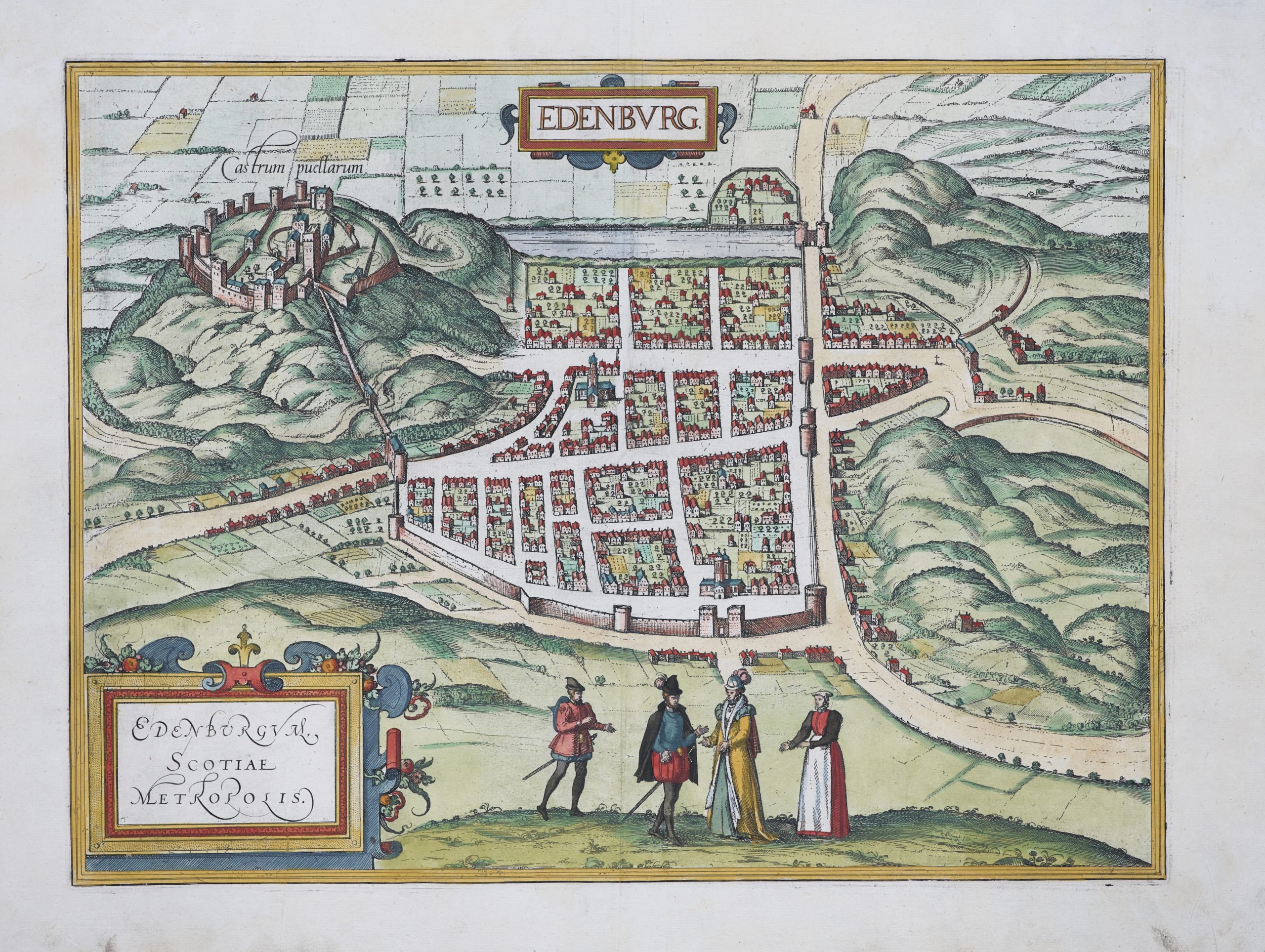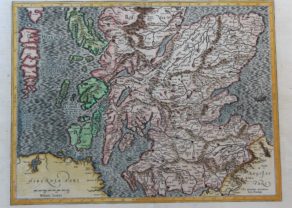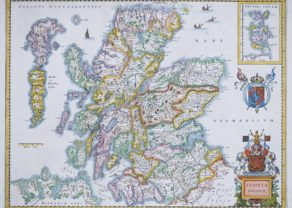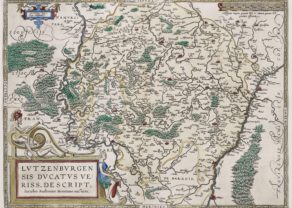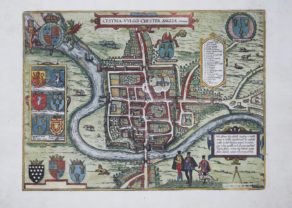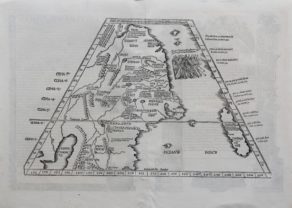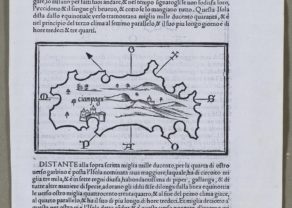Edinburgh
Detail
Date of first edition: 1581
Date of this edition: 1588
Dimensions (not including margins): 34 x 45,5 cm
Condition: excellent. Sharp printing. Centre fold is as published. Old hand coloured. Wide margins. Copper engraving printed on paper.
Condition rating: A+
Verso: text in French
Reference: Fauser, 3417; Taschen, Br. Hog., p.205
From: Civitatis Urbis Terrarum (III: Urbium praecipuarum totius mundi, liber tertius), date of first edition 1581, date of this edition 1588, Gottfried von Kempen, Köln
In stock
Edinburgh commented by Braun
“To the west of the city a mountain with a tall cliff rises up, upon which stands a castle, which is extremely secure due to its natural setting. On the side of the city to the east lies a majestic monastery to the Holy Cross, alongside it a royal palace set within an exceedingly charming garden. There are two large streets in this city, one that is paved with ashlar stone, leading from the Maidens’ Castle to the monastery and to the royal palace, and the other is the highway. From the highway running from north to south countless smaller roads branch off, all of which are lined with very tall buildings.”
CARTOUCHE: Edinburgh is the capital of Scotland (Edenburgum, Scotiae Metropolis)
Taschen on Edinburgh
Edinburg is seen in the plan view from the south, in the foreground are two figures wearing the typical style of dress of the nobility during the time of Mary, Queen of Scots. Perched atop the Castle Rock is Edinburgh Castle, indicated here as Castrum puellarum, or “Maidens’ Castle”.
 The origins of this name are not known. According to one legend it can be traced back to a tradition among the Picts of holding virgins captive in the castle. Other sources refer to a legend claiming that princesses were able to live there in safety. It is also the place where King Malcolm III’s widow, later St Margaret of Scotland, allegedly resided in the 11th century. The upper, horizontal thoroughfare, the High Street (later called the Royal Mile), which leads from the Castle Rock via the Gothic church of St Giles and the town gate in the east to Holyrood abbey, can readily be identified. The guesthouse of the abbey was transformed in the 16th century into the official residence of the British Monarchy in Scotland, the Palace of Holyroodhouse. Due to a burgeoning population Edinburgh’s buildings had as many as 12 floors. Contemporary accounts tell of the miserable hygienic conditions that prevailed there and the resulting spread of disease. Around 1550 the town had 15,000 inhabitants; today 435,000 people live in Scotland’s capital.
The origins of this name are not known. According to one legend it can be traced back to a tradition among the Picts of holding virgins captive in the castle. Other sources refer to a legend claiming that princesses were able to live there in safety. It is also the place where King Malcolm III’s widow, later St Margaret of Scotland, allegedly resided in the 11th century. The upper, horizontal thoroughfare, the High Street (later called the Royal Mile), which leads from the Castle Rock via the Gothic church of St Giles and the town gate in the east to Holyrood abbey, can readily be identified. The guesthouse of the abbey was transformed in the 16th century into the official residence of the British Monarchy in Scotland, the Palace of Holyroodhouse. Due to a burgeoning population Edinburgh’s buildings had as many as 12 floors. Contemporary accounts tell of the miserable hygienic conditions that prevailed there and the resulting spread of disease. Around 1550 the town had 15,000 inhabitants; today 435,000 people live in Scotland’s capital.
The engraving was made after a woodcut by Raphael Holinshead, 1574.
Related items
-

South Scotland – Scotiae parts septentrionalis
by Gerard Mercator, Jodocus Hondius Jr.Price (without VAT, possibly to be added): €500,00 / $555,00 / £445,00Per Gerardum Mercatorem
Cum privilegio
-

Scotland – Nova Scotia
by Willem and Joan BlaeuPrice (without VAT, possibly to be added): €1 000,00 / $1 110,00 / £890,00A nice map of Scotland
